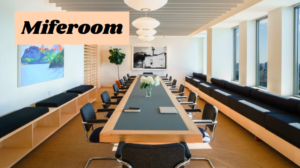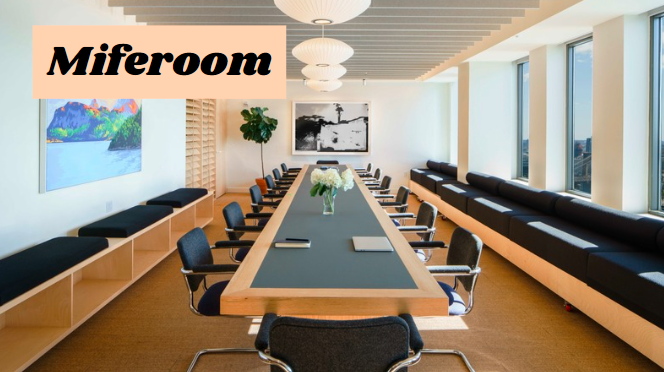Käämyäjä is a traditional Finnish craft characterized by intricately designed wooden items, predominantly crafted from birch or pine. This ancient art form has been passed down through generations and remains a cherished cultural practice in Finland. This article delves into the rich history, techniques, and cultural significance of käämyäjä, while also exploring its modern-day applications and relevance.
Introduction to Käämyäjä
Käämyäjä, a traditional Finnish craft, is renowned for its intricate wooden designs. The term “käämyäjä” refers not only to the craft itself but also to the artisans who master this form of woodworking. Predominantly utilizing birch and pine, these craftsmen create a variety of wooden items that are both functional and decorative.
The essence of käämyäjä lies in its detailed patterns and the skillful manipulation of wood, reflecting the deep connection between the Finnish people and their natural environment.
The History of Käämyäjä
Origins and Evolution
The origins of käämyäjä can be traced back to ancient Finland, where woodworking was a crucial part of daily life. Early Finnish communities relied on wood for building homes, tools, and household items.
Over time, the utilitarian aspect of woodworking evolved into a form of artistic expression. The intricate designs and patterns characteristic of käämyäjä began to emerge, showcasing the artisans’ creativity and technical prowess.
Historical Significance
Käämyäjä played a significant role in Finnish society, particularly in rural areas. Wooden items crafted through käämyäjä were not only practical but also held cultural and symbolic meanings.
For example, finely crafted wooden spoons, bowls, and other household items were often given as gifts during important life events such as weddings and births. These items were cherished as heirlooms, passed down from generation to generation.
Preservation of Tradition
Despite the advent of modern manufacturing techniques, käämyäjä has managed to survive and thrive. Efforts to preserve this traditional craft have been bolstered by cultural organizations and artisans dedicated to keeping the art form alive.
Today, käämyäjä is celebrated in museums, cultural festivals, and through educational programs aimed at teaching the younger generation about this unique aspect of Finnish heritage.
Materials Used in Käämyäjä
Birch and Pine: The Staples of Käämyäjä
Birch and pine are the primary materials used in käämyäjä. These woods are abundant in Finland and possess qualities that make them ideal for woodworking.
Birch
Birch wood is known for its fine grain and smooth texture, making it suitable for intricate carving. It is also relatively easy to work with, allowing artisans to create detailed designs. Birch has a light color, which can be enhanced with natural stains or left untreated to showcase its natural beauty.
Pine
Pine wood, on the other hand, is prized for its strength and durability. It has a more pronounced grain pattern compared to birch, which adds a unique aesthetic to the finished products. Pine is also versatile, allowing for both functional and decorative items to be crafted with equal ease.
Other Materials
While birch and pine are the mainstays of käämyäjä, artisans sometimes incorporate other materials to enhance their creations. These may include:
- Willow and Alder: Used for their pliability and ease of carving.
- Natural Dyes: Extracted from plants and minerals to add color to the wood.
- Metal Inlays: For added decorative elements and structural reinforcement.
Techniques and Tools in Käämyäjä
Traditional Techniques
The techniques used in käämyäjä have been refined over centuries, passed down through generations of artisans. These methods emphasize precision and attention to detail, ensuring that each piece is a work of art.
Carving
Carving is the cornerstone of käämyäjä. Artisans use various carving tools to create intricate patterns and designs on the wood’s surface. These patterns often include geometric shapes, floral motifs, and other symbols inspired by nature.
Joinery
Traditional joinery techniques are employed to assemble different wooden parts without the use of nails or screws. These methods not only enhance the aesthetic appeal but also ensure the structural integrity of the finished product.
Finishing
The finishing process involves sanding, polishing, and sometimes staining the wood to achieve the desired look. Natural oils and waxes are often used to protect the wood and enhance its natural beauty.
Modern Innovations
While traditional techniques remain at the heart of käämyäjä, modern innovations have also found their way into the craft. Contemporary artisans may use power tools to expedite certain processes, though the emphasis on handcraftsmanship remains strong. Additionally, new materials and finishes are being explored to expand the range of käämyäjä products.
Tools of the Trade
The tools used in käämyäjä are essential to the craft. These include:
- Knives and Chisels: For detailed carving and shaping.
- Mallets: Used in conjunction with chisels for more controlled cuts.
- Saws: For cutting wood to size.
- Planes: To smooth and flatten surfaces.
- Rasps and Files: For refining and detailing edges and surfaces.
Cultural Significance of Käämyäjä
A Symbol of Finnish Identity
Käämyäjä is more than just a craft; it is a symbol of Finnish identity and cultural heritage. The intricate designs and meticulous craftsmanship reflect the values of patience, precision, and respect for nature that are deeply ingrained in Finnish culture.
Celebrations and Festivals
Käämyäjä is celebrated in various cultural festivals and events throughout Finland. These occasions provide a platform for artisans to showcase their work, exchange knowledge, and engage with the public. Notable events include:
- The Helsinki Design Week: A major event that features a variety of design and craft exhibitions, including käämyäjä.
- The Finnish Craft and Design Fair: Held annually in Tampere, this fair highlights traditional Finnish crafts and modern innovations.
- Local Craft Markets: Smaller markets and fairs held in towns and villages, where local artisans display and sell their creations.
Educational Programs
Efforts to preserve and promote käämyäjä include educational programs aimed at teaching the craft to new generations. These programs are often organized by cultural institutions, craft schools, and community centers. Workshops and classes provide hands-on experience and help participants develop the skills needed to continue the tradition.
Modern Applications of Käämyäjä
Contemporary Designs
While traditional käämyäjä is characterized by its intricate and historical designs, contemporary artisans are exploring new styles and applications. Modern käämyäjä products often blend traditional techniques with innovative designs, appealing to a broader audience.
Functional Art
In addition to decorative items, käämyäjä has found a place in functional art. Artisans create furniture, kitchenware, and other household items that are both practical and aesthetically pleasing. These pieces often feature ergonomic designs and sustainable materials, aligning with modern values of functionality and environmental consciousness.
Custom Creations
Custom-made käämyäjä items are becoming increasingly popular. Artisans offer personalized designs for special occasions, such as weddings, anniversaries, and corporate events. These bespoke creations allow customers to own unique pieces that reflect their personal tastes and preferences.
Learning and Preserving the Art of Käämyäjä
Apprenticeships and Mentorships
One of the most effective ways to learn käämyäjä is through apprenticeships and mentorships. Aspiring artisans work closely with experienced craftsmen, gaining hands-on experience and learning the intricacies of the craft. This traditional method of knowledge transfer ensures that the skills and techniques of käämyäjä are preserved and passed down.
Craft Schools and Workshops
Craft schools and workshops offer structured programs for those interested in learning käämyäjä. These institutions provide a comprehensive education, covering both theoretical and practical aspects of the craft.
Students learn about the history, materials, and techniques of käämyäjä, and have the opportunity to create their own pieces under the guidance of skilled instructors.
Online Resources and Communities
With the advent of the internet, learning käämyäjä has become more accessible. Online resources, including tutorials, videos, and forums, allow individuals to learn at their own pace. Virtual communities provide a platform for artisans to share their work, seek advice, and connect with others who share their passion for käämyäjä.
The Future of Käämyäjä
Sustainable Practices
As environmental concerns become more pressing, the future of käämyäjä is likely to be shaped by sustainable practices. Artisans are increasingly using eco-friendly materials and techniques, ensuring that their craft has minimal impact on the environment. This focus on sustainability not only preserves natural resources but also aligns with the growing consumer demand for ethical products.
Global Recognition
While käämyäjä is deeply rooted in Finnish culture, it is gaining recognition on a global scale. International exhibitions, collaborations with designers from other countries, and online platforms are helping to introduce käämyäjä to a wider audience. This global exposure is likely to inspire new interpretations and adaptations of the craft, further enriching its tradition.
Innovation and Adaptation
Innovation and adaptation will play a crucial role in the future of käämyäjä. Artisans are continually exploring new materials, techniques, and designs to keep the craft relevant and appealing. By embracing change while honoring tradition, käämyäjä can continue to thrive and evolve.
Frequently Asked Questions (FAQs)
What is Käämyäjä?
Käämyäjä is a traditional Finnish craft that involves creating intricately designed wooden items, primarily using birch and pine. The craft is known for its detailed patterns and skillful manipulation of wood.
What materials are used in Käämyäjä?
The primary materials used in käämyäjä are birch and pine. Other materials such as willow, alder, natural dyes, and metal inlays may also be used to enhance the creations.
How is Käämyäjä different from other woodworking crafts?
Käämyäjä is distinguished by its intricate designs, traditional techniques, and cultural significance. It emphasizes precision, detail, and a deep connection to Finnish heritage and nature.
Where can I learn Käämyäjä?
Käämyäjä can be learned through apprenticeships, craft schools, workshops, and online resources. Cultural organizations and community centers often offer programs and classes for those interested in learning the craft.
What are some modern applications of Käämyäjä?
Modern applications of käämyäjä include contemporary designs, functional art, and custom-made creations. Artisans blend traditional techniques with innovative designs to create furniture, kitchenware, and decorative items that appeal to a modern audience.
How is Käämyäjä being preserved?
Käämyäjä is being preserved through educational programs, cultural events, and the efforts of dedicated artisans. Apprenticeships, craft schools, and online communities play a significant role in passing down the knowledge and skills of the craft.
What is the future of Käämyäjä?
The future of käämyäjä is likely to be shaped by sustainable practices, global recognition, and innovation. Artisans are exploring eco-friendly materials and techniques, gaining international exposure, and continually adapting the craft to keep it relevant and appealing.
Conclusion
Käämyäjä is a testament to the rich cultural heritage and artistic talent of the Finnish people. This traditional craft, characterized by its intricate wooden designs, continues to captivate and inspire both artisans and admirers around the world.
By preserving the techniques and embracing modern innovations, the art of käämyäjä will continue to thrive for generations to come. Whether through traditional methods or contemporary adaptations, käämyäjä remains a vibrant and cherished aspect of Finnish culture, embodying the timeless beauty and resilience of woodcraft.





















+ There are no comments
Add yours